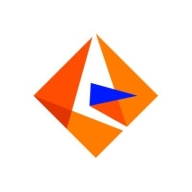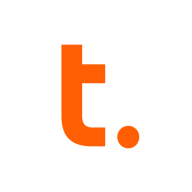

Informatica PowerCenter and Teradata compete in the data management and analytics category. Informatica PowerCenter excels in integration and transformation capabilities, while Teradata holds the upper hand in performance and real-time analytics.
Features: Informatica PowerCenter is renowned for its advanced transformation capabilities, allowing seamless integration across all data formats, and providing robust error-handling mechanisms. Teradata stands out for its parallel processing architecture, in-database analytics, and high-speed query capability for large data sets.
Room for Improvement: Informatica PowerCenter needs enhancements in user interface clarity and cost efficiency, addressing issues related to its GUI and the expertise required for installation. Teradata faces challenges with high pricing and scalability, particularly regarding cloud compatibility and integrating unstructured data.
Ease of Deployment and Customer Service: Informatica PowerCenter is primarily deployed on-premises with mixed reviews on technical support, while Teradata offers deployment across on-premises and cloud environments, with commendations for technical support but noted cost challenges.
Pricing and ROI: Informatica PowerCenter is valued for handling complex data scenarios but can be costly for smaller enterprises. Teradata, despite its high cost, is noted for delivering significant ROI for large enterprises through its performance and scalability.
I like the technical support provided by Informatica.
Customer support is very good, rated eight out of ten under our essential agreement.
The technical support from Teradata is quite advanced.
For scalability, I would rate Informatica PowerCenter between eight to nine.
This expansion can occur without incurring downtime or taking systems offline.
Scalability is complex as you need to purchase a license and coordinate with Teradata for additional disk space and CPU.
Informatica PowerCenter is stable and can scale well.
I find the stability to be almost a ten out of ten.
The workload management and software maturity provide a reliable system.
With Informatica PowerCenter, I am looking for an AI interface that looks at the underlying data model of the databases and the metadata of the tables, allowing the developer to provide instructions on what data sources to connect to and how to apply or create Transformations.
Utilizing more stored procedures from Oracle databases in an easy way would significantly boost performance.
Unlike SQL and Oracle, which have in-built replication capabilities, we don't have similar functionality with Teradata.
The price of Informatica PowerCenter is high, especially for small and medium-sized businesses.
I find that the pricing and licensing for Informatica PowerCenter align with its quality.
Initially, it may seem expensive compared to similar cloud databases, however, it offers significant value in performance, stability, and overall output once in use.
Teradata is much more expensive than SQL, which is well-performed and cheaper.
The system supports real-time integration, which is essential for many of my tasks.
The functions in Informatica PowerCenter that I have found most valuable are the way it manages the volume of data, the push down optimization, and the performance aspects of it, mostly related to parallelism techniques.
The data mover is valuable over the last two years as it allows us to achieve data replication to our disaster recovery systems.


Informatica PowerCenter is a data integration and data visualization tool. The solution works as an enterprise data integration platform that helps organizations access, transform, and integrate data from various systems. The product is designed to support companies in the full cycle of a project, from its initial rollout to critical deployments. Informatica PowerCenter allows developers and analysts to collaborate while accelerating the work process to deploy projects within days instead of months.
The Advanced edition of the product provides an additional real-time engine which allows companies to have always-on enterprise data integration. This ensures seamless collaboration and increment of data lineage visibility and impacts analysis.
The Premium edition of the solution offers an early warning system that detects unexpected behaviors or incorrect utilization of resources in the workflows and alerts companies in the case that these occur. This version of the product also offers automatic data validation, which ensures data accuracy and reduces testing time and expenditure of resources for by up to 90%.
Informatica PowerCenter Features
The product provides users with various features which allow them to execute data integration initiatives such as analytics, data warehousing, data governance, consolidation, and application migration. The features of the solution include:
Informatica PowerCenter Benefits
The benefits of using Informatica PowerCenter include:
Reviews from Real Users
Yahya T., a developer and architect at L'Oreal, says the product is stable, provides good support, and integrating it with other systems is very fast.
Mohamed E., a senior manager for Data management and data governance at a tech company, says PowerCenter is stable, mature, and offers flexibility in building the pipeline and has a drag-and-drop mode because it's GUI-based; technical support is brilliant.
Teradata is a scalable data analytics platform designed to meet enterprise demands for large-scale data management and processing, focusing on performance, scalability, and security for complex query executions.
As a leading data warehousing solution, Teradata integrates advanced analytics enabling organizations to derive insights from massive datasets. It supports high-volume data workloads with its architecture optimized for analytical queries. Users benefit from its robust scalability, allowing seamless expansion as data grows. Teradata's SQL engine is compatible with a wide range of data types, ensuring flexibility in data analysis. With advanced security measures, it protects sensitive data across various environments, providing peace of mind to users handling critical information.
What are the most important features of Teradata?Teradata is widely used in industries like finance, telecommunications, and healthcare, where data-driven decisions are critical. Companies leverage its robust analytics capabilities to enhance customer experiences, streamline operations, and ensure compliance with regulatory requirements. In these sectors, quick access to data insights can significantly impact competitive advantage.
We monitor all Data Integration reviews to prevent fraudulent reviews and keep review quality high. We do not post reviews by company employees or direct competitors. We validate each review for authenticity via cross-reference with LinkedIn, and personal follow-up with the reviewer when necessary.